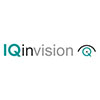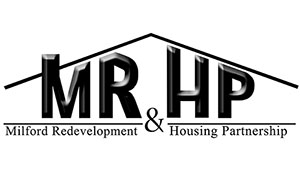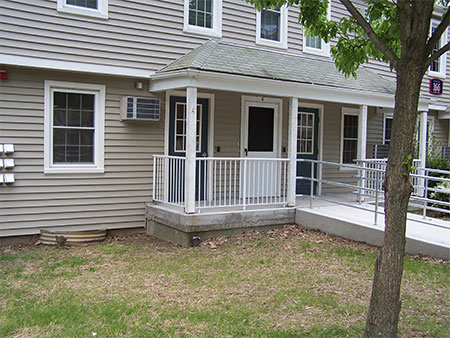
Milford Housing Authority Improves Quality of LIfe with Megapixel Surveillance
- By Wendi Burke
- Mar 26, 2013
 IQinVision, a solution provider of high-performance HD megapixel IP cameras, today announced that the Milford (CT) Redevelopment and Housing Partnership is successfully using IQinVision HD megapixel cameras to improve quality of life, increase safety, and streamline administration throughout their extensive housing projects. Valley Communications is the integrator for this growing project.
IQinVision, a solution provider of high-performance HD megapixel IP cameras, today announced that the Milford (CT) Redevelopment and Housing Partnership is successfully using IQinVision HD megapixel cameras to improve quality of life, increase safety, and streamline administration throughout their extensive housing projects. Valley Communications is the integrator for this growing project.
In 2007, the Speaker of the Connecticut House of Representatives, who had grown up in public housing, initiated an effort to improve security at the state’s subsidized housing developments. Anthony J. Vasiliou, executive director for the Milford Redevelopment and Housing Partnership, offered to do a video surveillance pilot project for the state. Vasiliou explained, “The U.S. Housing and Urban Development Department requires an annual plan. In our plan, we sat out to install and expand video surveillance so that our residents would feel safer. When people feel safe, they want to move into our developments, and then they want to stay in place. That’s good for them, and it’s good for the housing authority.”
The Milford Redevelopment and Housing Partnership, established in 1948, is somewhat unique in that it is a combination of both state and federally-supported housing. The partnership has a total of 465 housing units spread over six federal projects and four state projects. The housing is a mix of mid-rise apartment buildings  and single-family dwellings, located throughout Milford.
and single-family dwellings, located throughout Milford.
After the successful video surveillance pilot project, Milford expanded the number of cameras and the project’s goals to include better housing lease enforcement and maintenance cost reduction. Today, 282 cameras are deployed at nine of the partnership’s developments, the majority of which are IQeye HD megapixel cameras, with that number soon to grow to approximately 300 cameras.
IQeye cameras are deployed in building entrances, hallways and stairwells, laundry rooms, common areas, elevators, and to monitor parking lots and outdoor public spaces. “We chose the camera locations very carefully,” recalled Vasiliou. “We can monitor all areas of interest, and we can follow someone from parking their car to the unit they are visiting or living in—this provides us with crucial information to monitor and enforce our lease agreements.”
In addition to enforcing lease agreements, video surveillance helps administrators in a myriad other ways: to combat illegal dumping; monitor vagrants in corridors; prevent unauthorized use of community rooms; catch smoking in elevators and other restricted areas; and to keep laundry facilities clean.
As Vasiliou explained, so many of these quality-of-life issues improve living conditions for the residents while at the same time increase the partnership’s revenue through rent and fees paid, and substantially cutting maintenance costs. “We use our cameras heavily to modify and improve behavior, but we’re also cutting costs and getting compensated for actions taken.”
The IQeye cameras are managed by exacqVision video management software. All recording is done on motion, and most video is utilized for after-incident, forensic investigation. The housing partnership has 58 terabytes of storage with a goal of at least 30 days of retention. Vasiliou and staff can view video on a central, 46-inch monitor, on office smart boards, and on individually-designated computers and mobile devices.
Staff who have access to camera views include the Public Housing Manager, Compliance and Operations Manager, the Executive Director; and those working or in attendance in the central conference room.
“Our entire operation is centralized,” said Vasiliou. “We monitor everything from one location, so we don’t need a high-priced manager on site at each development—our cameras do that, and they never sleep! We’ve achieved greater efficiencies, and we’ve become a lower-cost provider of public housing.”
Among the many benefits Vasiliou has seen from video surveillance, one was quite unexpected: a major change in tenant involvement.
“Tenants have a real tendency to not want to be involved, but now that we have cameras, they are much more willing to report incidents because we don’t need them as witnesses. We get a lot of tips from our residents and that helps us a great deal.”
The housing authority has also seen a major reduction in their legal fees.
“We have been able to avoid legal costs because when we have the evidence, we can administratively take care of many incidents ourselves. This is a major savings, and it’s growing.”
“Video surveillance is making a big difference in our residents’ quality of life. When people feel secure, that adds to their quality-of-life. When we diminish any fears that our residents might have and we improve security for our buildings and grounds, that’s a very good thing for our residents and for us. Our cameras have assisted in solving so many incidents ranging from altercations between residents to getting bad behavior and vagrancy out of our common areas to retrieving a lost key fob. We also use our cameras to monitor for maintenance needs during routine situations and during emergencies like hurricanes Irene and Sandy, and the super-storm blizzard in which Milford received 38 inches of snow in 24 hours, more than anywhere else in New England. I was stuck at home during the snowstorm, and I used our video surveillance system to direct maintenance and snow removal crews. The list of benefits goes on and on.”
In talking about a newer deployment where Vasiliou is using IQeye 5 MP Sentinel cameras for license plate recognition, he remarked, “The IQeye cameras do a great job. They zero right in from a distance and give us the views we need. Nobody knows we’re getting the shot, not even the bad guys.”